14-2 Community Supports
A – The Importance of Community
As we consider the exosystem of Bronfenbrenner’s model, it’s important to talk about the communities in which children live. Communities provide a variety of resources for children, families, and even for educators.
This quote from the U.S. Department of Education’s web article, Better Use of Community Resources, emphasizes that communities have a wealth of resources that can enrich children’s lives:
“Leveraging community resources and local partnerships supports high-quality academic and enrichment opportunities by broadening the experiences that may be typically offered to students and by expanding access to local expertise.”
Community Resources
In this section, we’ll consider community in several ways. We’ll think about programs that provide support to parents and families, enriching children’s development by giving families a more supportive environment. We’ll also think about how educators can leverage community resources to support their teaching practices. Finally, we’ll consider the ways that children can interact directly with community resources to support their learning.

Reflection Point
Consider the following two questions:
- What resources in the community do you personally use?
- How have you used community resources to expand the experiences of children in your early learning program?
B – Community Supports for Parents
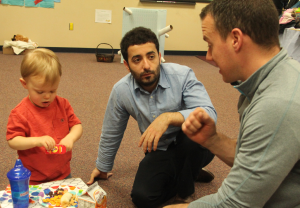
Community support programs for parents typically have the goal of strengthening existing parent abilities and developing new competencies to promote children’s development.
These kinds of programs are called capacity-building because they are designed to give parents skills that last beyond the duration of the program. These skills often help parents learn where to go for help and how to access a variety of services.
Community-based programs for parents are based on the idea that when parents are supported and have access to resources, they feel better about themselves and their parenting abilities, and in turn, they have higher quality interactions with children, leading to improved child development.
Many programs that provide support to parents use a strengths-based approach. They recognize parents as children’s first and most important educators, treat parents with respect, and recognize parents as important partners. This approach gives parents the confidence to make decisions about their child’s development and education.
Program Spotlight: Home Visiting
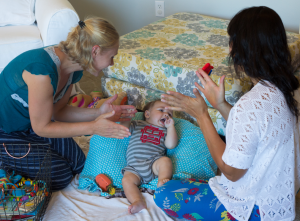
One delivery method for community-based parent support is home visiting.
Home-visiting programs typically give pregnant and new parents, especially at-risk families, the resources and skills to support children’s development. These voluntary programs connect families with professionals who meet with them in the home environment and provide support for children’s physical, social and emotional, and cognitive development.
The federal government has historically provided some funding for home-visiting programs through the Maternal, Infant, and Early Childhood Home Visiting Program (MIECHV). In 2016, MIECHV supported home visiting for more than 160,000 families across the country. Programs supported by MIECHV funds must measure outcomes in six domains:
- Improvement in maternal and newborn health
- Reduction in child injuries, abuse, and neglect
- Improved school readiness and achievement
- Reduction in crime or domestic violence
- Improved family economic self-sufficiency
- Improved coordination and referral for other community resources and supports
Different home-visiting programs use a variety of models to provide services to families. Some of the most common programs are:
- Nurse Family Partnership (NFP) – Here, nurses visit first-time mothers starting early in pregnancy and continuing through the child’s second birthday.
- Parent-Child Home Program (PCHP) – This program provides two years of twice-weekly home visits to parents and children between the ages of 16 months and 4 years. Home visitors are typically from the same community and culture as families.
- Parents as Teachers (PAT) – In this program, parents are trained on the PAT model to be parent educators to fellow parents. Parents receive support from PAT for at least two years, sometime between the prenatal period and when the child enters kindergarten.
A variety of research has demonstrated lasting effects of home visiting on children’s development. For example, a recent study of the PCHP program in Seattle, Washington, found that children who participated in PCHP showed increased kindergarten readiness, increased kindergarten English-language proficiency, and increased third-grade academic performance.
Program Spotlight: Play and Learn
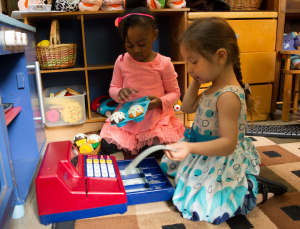
Another way that communities offer support to parents is through play-and-learn or other similar groups.
Generally, play-and-learn groups are free opportunities for parents and children to attend facilitated play groups. No registration is required, and parents can drop in as their schedule allows. The children play and interact with other children their age. Parents support their play while the facilitator shares information about activities that support child development, what to expect with child development, and school readiness expectations.
The goal of play-and-learn groups is to give families the skills and knowledge they need to support children’s development.
Many communities offer play-and-learn groups in a variety of languages and some offer groups for specific populations like children with disabilities.
Kaleidoscope Play and Learn groups are a specific version of the play-and-learn model that follows set guidelines and evaluates outcomes annually. These evaluations found that about 90 percent of parents feel more supported after participating in the program.

Reflection Point
What kinds of similar programs do you have in your community?
C – Community Supports for Educators
Educators can also take advantage of community resources to expose children to new and interesting foods, places, and concepts, but educators can also use community resources for their professional benefit.
To the extent that field trips are possible, consider taking children into the community. Parks and gardens are fantastic places to talk about bugs, plant life, weather, and science. You can even talk about ideas about animals’ feelings to focus on social and emotional skills.
The Office of Head Start also suggests visiting local grocery stores or farmers markets as ways to encourage healthy eating habits. By exposing children to new fruits and vegetables—and perhaps by sampling them—children may discover new foods and tastes. You could also use these opportunities to talk about culture, if you are at a specialty store, and local agriculture and geography by focusing on foods grown in the region.
Child Development Resources
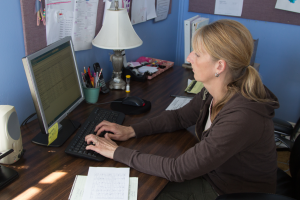
Some communities have specific resources that are intended to provide educators with a variety of professional services.
The University of Alabama’s Child Development Resources, for example, provides free professional development trainings and has a workroom with supplies that educators can use to make copies and prepare activities.
They also have a library of materials that educators can check out for use in the early learning setting. These materials may be anything from bundles of books on a similar topic to activity kits for children of different ages that support a variety of skills.
Although these resources are only available to educators in that area, other communities have resources that provide similar professional services to educators.
Libraries
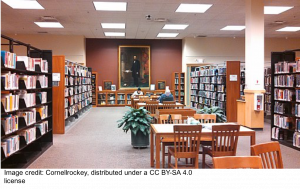
Libraries are another resource that is widely available in communities across the country.
Libraries not only provide educators with a variety of books that will support their professional development, but they also can provide educators with resources for early learning program use.
Children’s sections of libraries provide a wealth of books that can be checked out for program use. Educators can assemble a set of books on a similar topic or that reinforce a certain message. By repeating the same topic or message through different books, children will learn more effectively.
Children’s librarians are often an untapped source of wisdom when it comes to children’s books. They often know the new titles or the often-overlooked gem that might be exactly what an educator needs. By getting to know the local children’s librarian, educators can get access to a free, knowledgeable resource.
How to Find Resources
Although many communities have resources available to families and educators, finding the resources can be tricky. Talk to other educators and get to know the professionals you encounter in the community. Where do they go for support and resources?
You might also look to the local newspaper, as it potentially highlights programs or programs may advertise in the paper.
Also, consider other ways to find local resources, such as:
- Parenting and family support organizations
- Local parenting groups and play groups
- Schools
- Babysitting clubs
- Libraries
- Government agencies
- Family and friends
Video: Change Is Coming to Weinland Park (4:55)
This Annie E. Casey Foundation video, Change is Coming to Weinland Park, covers the changes that residents and others are seeing in the Weinland Park neighborhood in Columbus, Ohio, and their hopes for the future.
Watch Change is Coming to Weinland Park from Annie E. Casey Foundation on YouTube.

Video Debrief
What specific programs did you see mentioned here? (click to toggle expand or collapse)
Possible Answers
- A faith-based sports program
- Moms2B
How did these programs serve the community? (click to toggle expand or collapse)
Possible Answers
- The sports program gave children community, skills, and adult role models.
- Moms2B provided social and emotional support for mothers and families.
What barriers did the programs overcome? (click to toggle expand or collapse)
Possible Answer
- They had no registration fees to reduce financial obstacles.
- They provided positive role models to support children who needed them.
- They offered support and information to help women who lacked support to have full-term, healthy children.

Reflection Point
Start thinking about how family engagement relates to community resources. The idea is that to create an environment where educators and families effectively and comfortably share information about community resources, early learning professionals must know the family well and develop a strong partnership with them. This in turn supports children’s learning and development.
Consider the following two questions:
- What are some connections between family engagement and community resources?
- How can you use both community resources and family engagement to encourage children’s learning and development?
 References
References
Annie E. Casey Foundation. (2014, October 15). Change is coming to Weinland Park. [Video]
Child Care Resources (n.d.). Kaleidoscope Play and Learn. [Website]
The College of Human Environmental Sciences, University of Alabama. (n.d.). Child development resources. [Website]
Cornellrockey. (2015, November 24). Tompkins County Public Library reading area. [Image]
Nurse Family Partnership (n.d.). About us. [Website]
ORSImpact. (2016, February). Long-term academic outcomes of participation in the parent-child home program in King County, WA. [PDF]
The Parent-Child Home Program. (n.d.). [Website]
Parents as Teachers. (n.d.). [Website]
Trivette, C. M., & Dunst, C. J. (2014). Community-based parent support programs. In R. E. Tremblay, M. Boivin, & RDev. Peters, (Eds.), Encyclopedia on early childhood development [Online]. [Online Article].
U.S. Department of Health and Human Services, Health Resources and Services Administration, Maternal and Child Health Bureau. (n.d.). Home visiting. [Online Article]
U.S. Department of Education. (2013). Better use of community resources. [Website]
U.S. Department of Health and Human Services, Administration for Children and Families, Office of Head Start, National Center on Health. (n.d.). Healthy foods: Eating well from the ground up, 2(1). [PDF]
EarlyEdU Alliance (Publisher). (2018). 14-2 Community supports. In Child Development: Brain Building Course Book. University of Washington. [UW Pressbooks]

